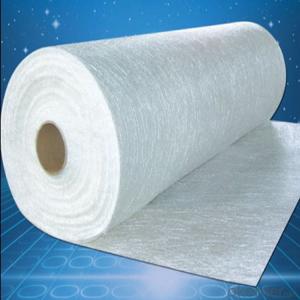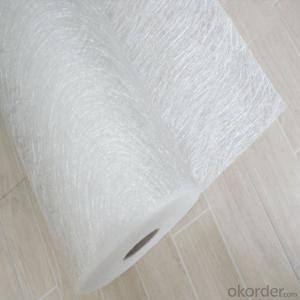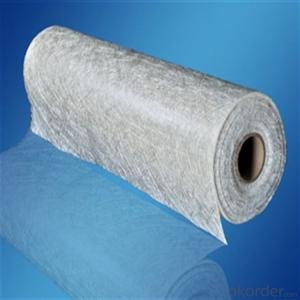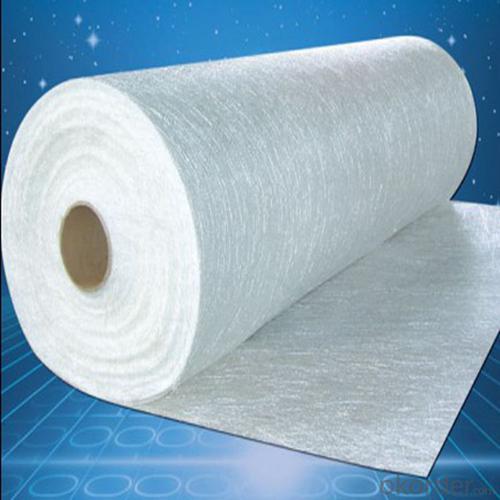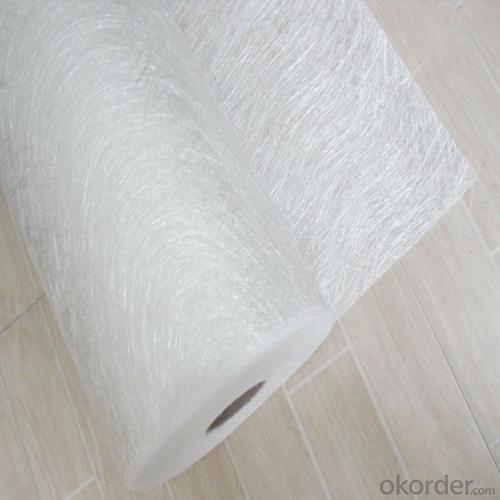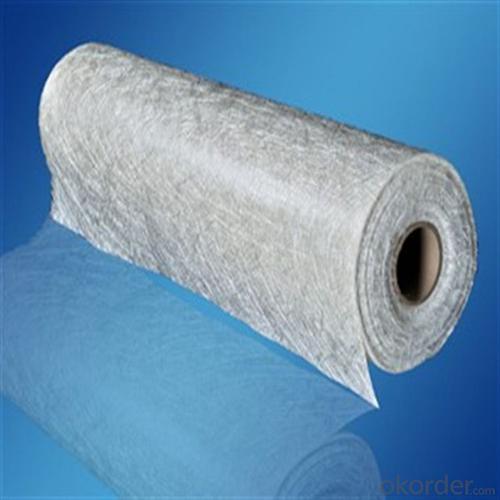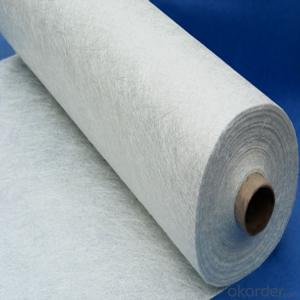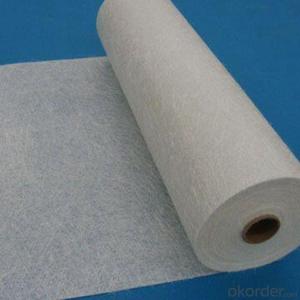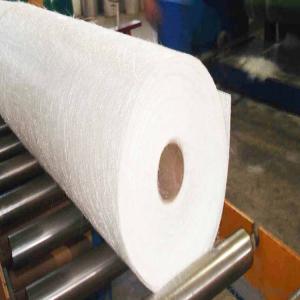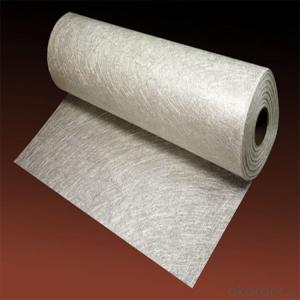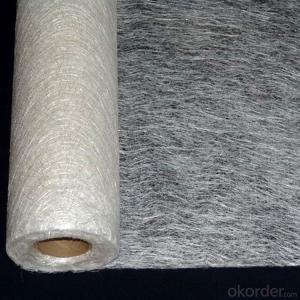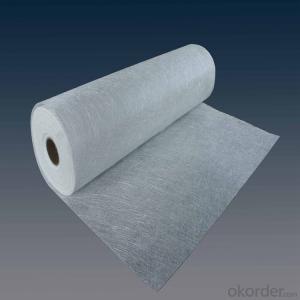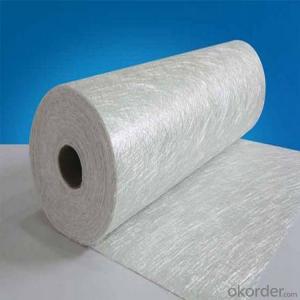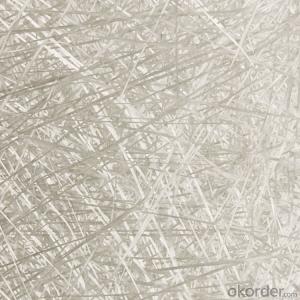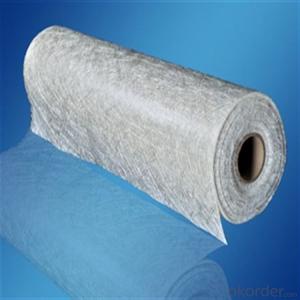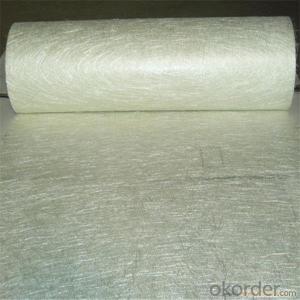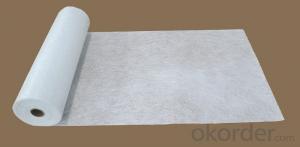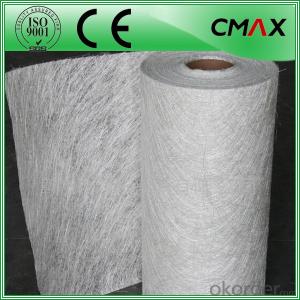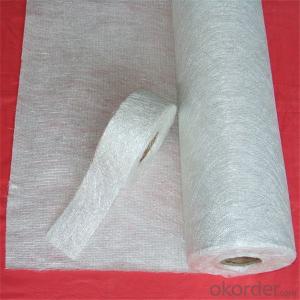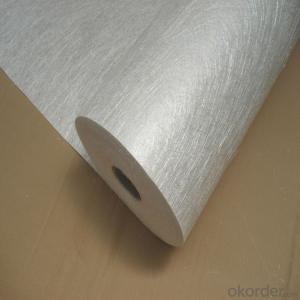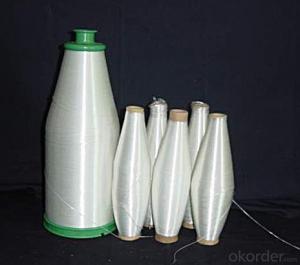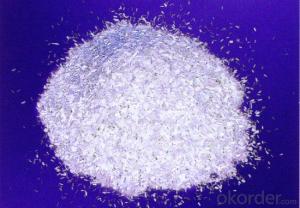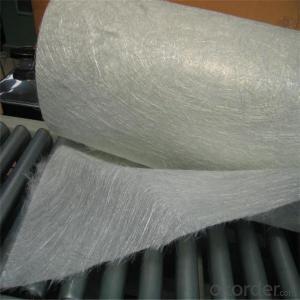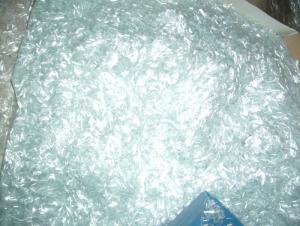Fiberglass Emulsion Chop Strand Mat
- Loading Port:
- China main port
- Payment Terms:
- TT OR LC
- Min Order Qty:
- 1 kg
- Supply Capability:
- 5000 kg/month
OKorder Service Pledge
OKorder Financial Service
You Might Also Like
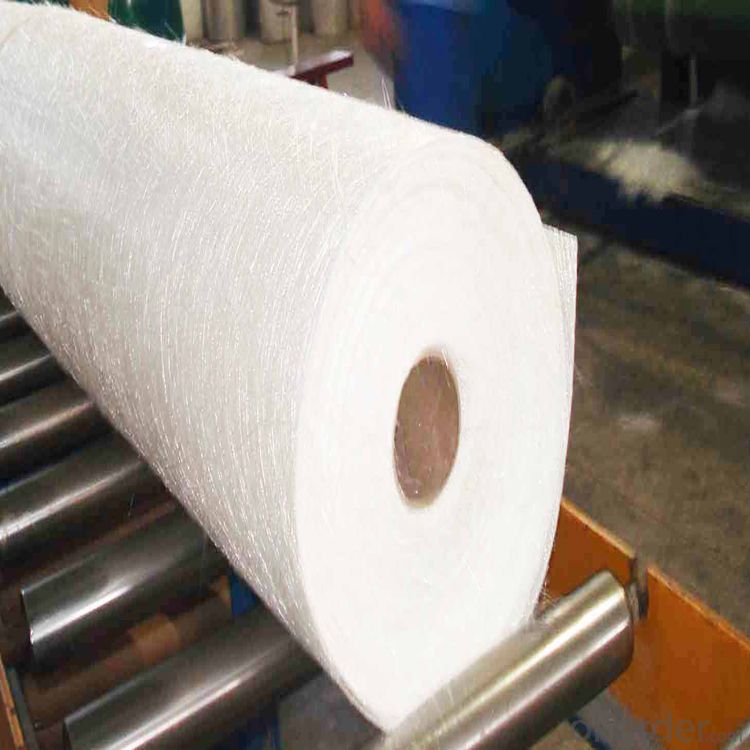
Product Description:
Chopped strand mat is made from chopped glass fibers, which are bonded with powder or emulsion binders. It can be used in hand lay-up process and continuous laminating process to produce FRP products, such as plates, lighting board, hull, bathtub, cooling towers, anti-corrosion materials, vehicles.
Features:
Uniform thickness, softness and hardness good.
Good compatibility with resin, easy completely wet-out.
Fast and consistent wet-out speed in resins and good manufacturability.
Good mechanical properties, easy cutting.
Good cover mold, suitable for modeling complex shapes.
Application:
fiberglass thickness is suitable for application by hand lay-up, reinforce and machine FRP molding,
including interior decoration of vehicles, boat hulls, complete set of sanitary equipment, anticorrosive pipes, tanks, building materials, tables, chairs, panels and all kind of composite FRP products.
Specifications:
Item | Over Density | Moisture Content | Chop Density | Polyester Yarn | Width |
(g/m2) | (%) | (g/m2) | (g/m2) | (mm) | |
EMK300 | 309.5 | ≤0.15 | 300 | 9.5 | 50-3300 |
EMK380 | 399 | 380 | 19 | ||
EMK450 | 459.5 | 450 | 9.5 | ||
EMK450 | 469 | 450 | 19 | ||
EMC0020 | 620.9 | 601.9 | 19 | ||
EMC0030 | 909.5 | 900 | 9.5 |
Special products are available according to customer’s requirement.
Product Packaging:
Each Surface Tissue is wound onto a paper tube which has an inside diameter of 76mm and the mat roll has a diameter of 330mm. The mat roll is wrapped up with plastic film,and then packed in a cardboard box or wrapped up with kraft paper. The rolls can be vertically or horizontally placed. For transportation, the rolls can be loaded into a cantainer directly or on pallets.
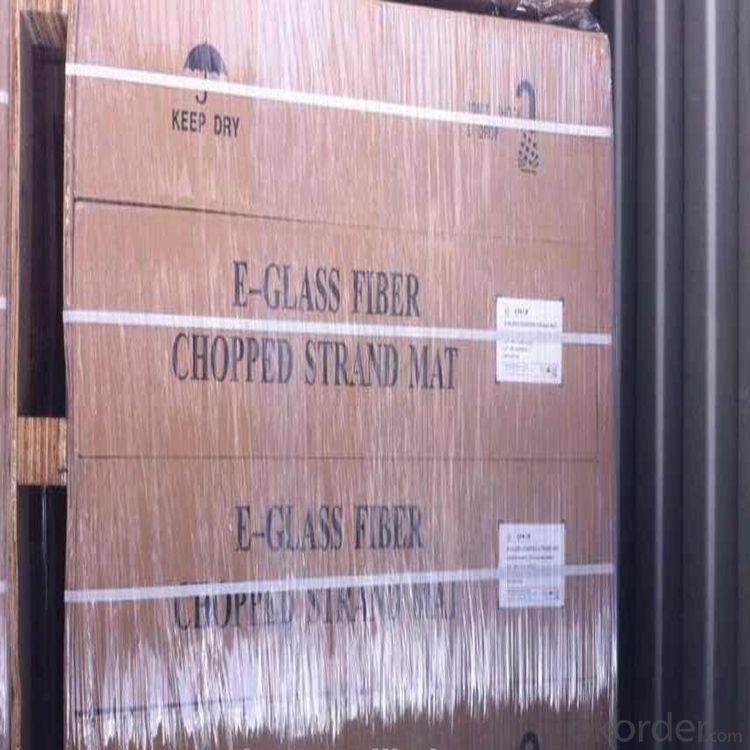
Product Storage:
Unless otherwise specified, Chopped Strand Mat should be stored in a dry, cool and rain-proof area. It is recommended that the room temperature and humidity should be always maintained at 15℃~35℃ and 50%~75% respectively.
Company Information
CNBM (China National Building Material) Group is the largest comprehensive building materials group in China that in integrate scientific research, manufacturing and logistics into one entity. The largest building materials and equipment specialists in China. Upon State Council approval, today CNBM owned more than 300 subordinate manufacturing factories and servicing companies. There are 6 fully owned public listed companies and 11 partially owned with substantial shares public listed companies. In many of these fields, CNBM is playing the leading role in the building industry in the country.
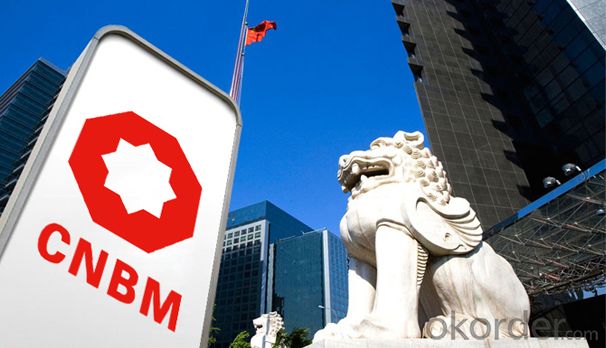
Order Information
Ordering please specify:
1. the product code, 2. weight, 3. width, 4. order quantity, 5. packaging, 6. special requirements please specify.
FAQ:
1. How long will you get reply?
Any inquiry will be replied within 24 hours. Usually we will reply within 12 hours.
2. How long is warranty period?
We provide 3 year warranty period.
3. What is your MOQ?
Any order quantity is available.
4. Can you provide sample?
Yes, samples are in stock. we can offer free sample for you.
5. Payment terms?
We can accept L/C, T/T, Western Union, Paypal etc.
6. Do you offer OEM service?
Yes, we can print customers’ logo on the packaging;
And the size and specification can be produced and design according to your demand.
7. What is the Production Lead Time?
15-20 days for bulk production after confirm the order.
- Q: Is glass fiber reinforced plastics industry a polluting industry?
- Does not belong to, glass fiber is environmentally friendly material.
- Q: How is fiberglass chopped strand used for thermal insulation?
- Fiberglass chopped strand is commonly used for thermal insulation due to its unique properties. Firstly, the fibers are made from molten glass which is then cooled and spun into fine strands. These strands are then chopped into shorter lengths, usually around 1-3 inches, and mixed with a binder to form a loose mat or blanket. The chopped strand mat is then used as a layer of insulation in various applications. Its primary function is to trap air within its fibers, creating a barrier that reduces heat transfer. Air is a poor conductor of heat, so the trapped air pockets within the mat act as an effective insulator, preventing heat from escaping or entering the insulated area. Furthermore, fiberglass chopped strand insulation is non-combustible, meaning that it does not contribute to the spread of fire. This makes it a particularly safe choice for thermal insulation in buildings and other structures. It also offers excellent acoustic insulation properties, reducing noise transmission through walls and floors. Another advantage of fiberglass chopped strand insulation is its durability. It does not degrade or lose its insulating properties over time, making it a long-lasting solution for thermal insulation. It is also resistant to moisture, mold, and pests, ensuring a consistently high level of insulation performance. In summary, fiberglass chopped strand is used for thermal insulation due to its ability to trap air, its non-combustible nature, acoustic insulation properties, durability, and resistance to moisture and pests. Its versatility makes it a popular choice for a wide range of applications, providing efficient and reliable thermal insulation for both residential and commercial buildings.
- Q: Does fiberglass chopped strand have any moisture resistance?
- Yes, fiberglass chopped strand does have some moisture resistance. Fiberglass is inherently water-resistant and does not absorb moisture like other materials such as wood. However, it is important to note that fiberglass can still experience some moisture absorption over time, especially if it is not properly sealed or coated. This can lead to potential issues such as delamination or reduced strength. Therefore, it is recommended to use appropriate coatings or finishes to enhance the moisture resistance of fiberglass chopped strand in applications where prolonged exposure to moisture is expected.
- Q: How does the manufacturing process of fiberglass chopped strand impact its quality?
- The manufacturing process of fiberglass chopped strand plays a significant role in determining the quality of the final product. Several factors influence the quality of fiberglass chopped strand during the manufacturing process. Firstly, the selection of high-quality raw materials is crucial. The fiberglass used should be of premium quality and have consistent properties. The choice of resin used to bind the fibers together also affects the overall strength and durability of the chopped strand. The manufacturing process should involve proper cutting techniques to achieve the desired length of the chopped strand. The cutting process must be precise and uniform to ensure consistent quality throughout the product. Any inconsistency in the length of the strands can result in variations in strength and performance. The alignment of the fibers is another critical aspect. The manufacturing process should ensure that the fibers are properly dispersed and aligned in a consistent manner. This alignment affects the mechanical properties of the chopped strand, such as tensile strength and stiffness. The curing process is also essential in determining the quality of the final product. Adequate curing time and temperature should be maintained to ensure proper bonding of the fibers and resin. Insufficient or excessive curing can lead to weakened bonds and reduced performance. Furthermore, quality control measures should be in place throughout the manufacturing process. Regular testing and inspection of the chopped strand for various properties, such as tensile strength, moisture content, and fiber distribution, help identify any deviations from the desired quality standards. Overall, the manufacturing process of fiberglass chopped strand significantly impacts its quality. Proper selection of raw materials, precise cutting techniques, uniform fiber alignment, appropriate curing, and rigorous quality control measures all contribute to ensuring a high-quality final product.
- Q: how long is the minimum length of the chopping glass fiber?
- 5mm, 12mm, 3mm, 9mm.5mm, 6mm, 41, 24mm, etc.
- Q: Is fiberglass chopped strand suitable for the production of sports equipment?
- Yes, fiberglass chopped strand is suitable for the production of sports equipment. It offers excellent strength and durability, making it ideal for various applications in sports equipment manufacturing.
- Q: What are the thermal insulation properties of fiberglass chopped strand?
- Fiberglass chopped strand has excellent thermal insulation properties due to its low thermal conductivity and high resistance to heat transfer. It effectively traps air pockets within its structure, which helps to reduce heat flow and maintain thermal stability. Additionally, its composition of glass fibers provides good insulation against both high and low temperatures, making it a popular choice for applications requiring thermal insulation.
- Q: What is the cost of fiberglass chopped strand compared to other materials?
- The cost of fiberglass chopped strand is generally lower compared to other materials such as carbon fiber or Kevlar.
- Q: What are the thermal expansion properties of fiberglass chopped strand?
- Certain thermal expansion properties are exhibited by fiberglass chopped strand. When exposed to heat, it tends to expand. The extent of expansion relies on factors like the composition of the fiberglass, the temperature range, and the length of the chopped strand. In general, fiberglass chopped strand has a relatively low coefficient of thermal expansion. This implies that it expands at a slower rate compared to other materials when subjected to temperature changes. The low coefficient of thermal expansion renders fiberglass chopped strand a suitable material for applications where dimensional stability is crucial, such as in the construction of composite materials, thermal insulations, and automotive components. However, it is important to note that the specific thermal expansion properties may vary depending on the manufacturer and the specific product formulation. Therefore, it is recommended to consult the manufacturer's technical data sheet or conduct tests to determine the exact thermal expansion properties of a particular fiberglass chopped strand product.
- Q: Is fiberglass chopped strand resistant to extreme temperatures?
- Fiberglass chopped strand is widely recognized for its ability to withstand extreme temperatures. With outstanding thermal stability, this material can endure high temperatures without compromising its mechanical properties. As a result, it is ideal for a range of applications that involve exposure to extreme temperatures, including automotive parts, industrial equipment, and insulation materials. Nevertheless, it is worth mentioning that the temperature resistance of fiberglass chopped strand can differ depending on its composition and manufacturing procedure. Consequently, it is advisable to consult the manufacturer or supplier to ascertain the precise temperature limits for a specific product.
Send your message to us
Fiberglass Emulsion Chop Strand Mat
- Loading Port:
- China main port
- Payment Terms:
- TT OR LC
- Min Order Qty:
- 1 kg
- Supply Capability:
- 5000 kg/month
OKorder Service Pledge
OKorder Financial Service
Similar products
Hot products
Hot Searches
Related keywords
